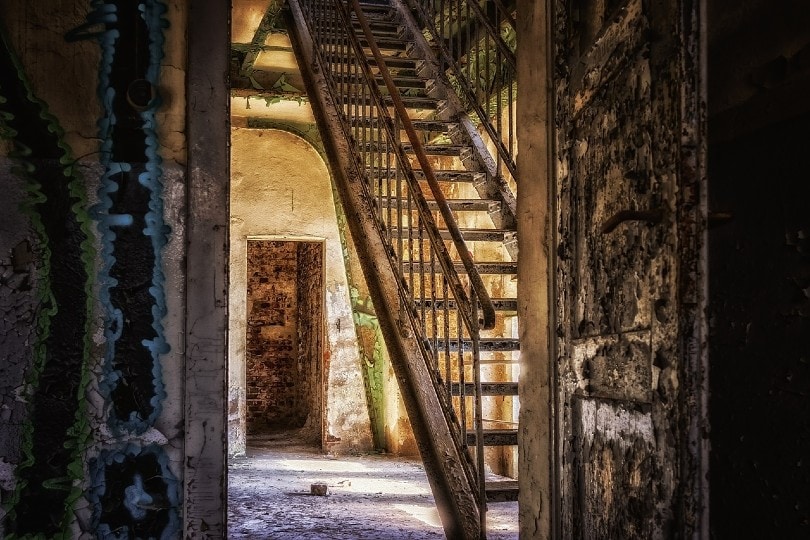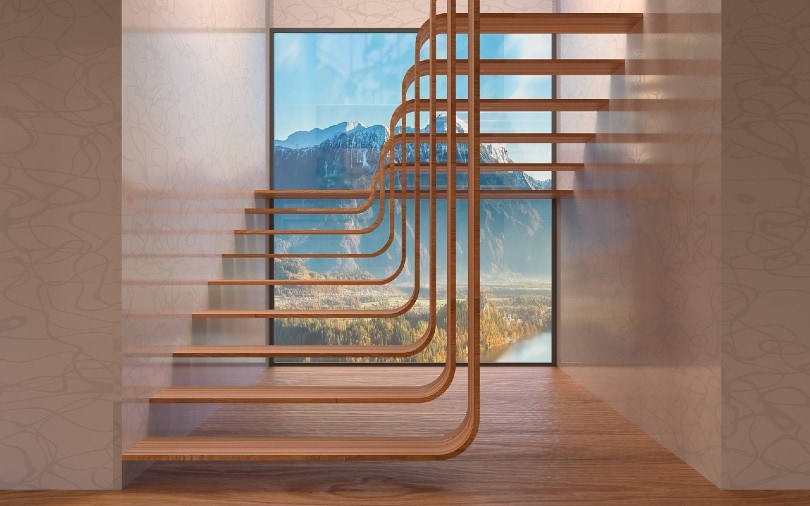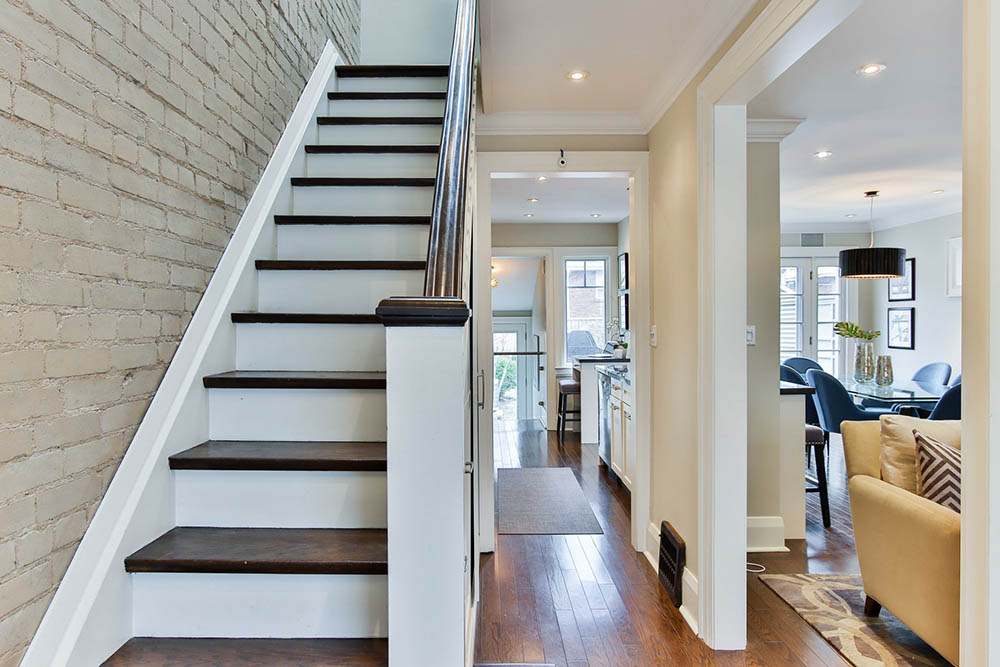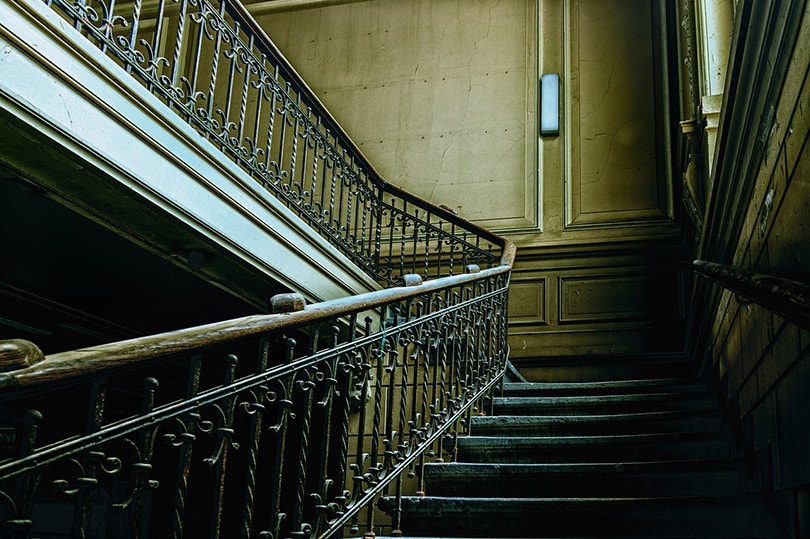What Is a Stair Tread? Types, Facts, & FAQ
-

- Last updated:

The stair tread is the horizontal section of a step and is the area that people stand or tread on. Other than differences in size, the types of stair treads are determined by the material that is used in their construction. The size of the tread is important. The depth of the tread is the distance from front to back and if it is too shallow, there isn’t enough room for people to comfortably stand on the step. A tread that is too deep may mean having to take two steps before moving up to the next tread.
Along with stair risers, they are the main part of a staircase. The riser is the vertical section between two steps, and they can be opened or closed depending on the design of the staircase.
How Does It Work?
Treads are risers that are the integral parts of a staircase and they should be designed so that people can ascend and descend easily without the risk of slipping, tripping, or falling. Risers play an important part in this because they determine the height of each step and how far a person has to raise their foot to get to the next step.
The tread is also important. Treads that are too shallow or do not go far enough back mean that some people may only be able to fit part of their foot on the step and are more likely to slip or trip. Treads that are too deep or go too far back make it difficult to take one step with each foot and it may be necessary to take two steps before moving to the next tread.
Treads and risers combine to determine how steep a staircase is and how comfortably people can climb it. Local building codes usually dictate an acceptable range for the height of risers and the depth of treads, so you must check these codes before designing stairs.

What Are the Different Types of Treads?
As well as determining an appropriate size for the treads, you should also choose a material according to the look and feel that you want from a staircase.
- Wood – Wood can be used for indoor or outdoor staircases, but you will need to choose an appropriate timber. Woods commonly used for indoor staircases include oak, maple, and walnut. Pressure-treated timber is most often used for decking and other outdoor stairs. Wood is warm and it can be treated and left, or it can be covered or painted.
- Glass – Glass should be textured so that you don’t slip when walking on the stairs and it needs to be strengthened glass designed for stairs. You can incorporate LED lights into glass stairs and combining glass with steel can turn your staircase into a central focal point for the house.
- Tile – Where wood stairs need regular treatment, tile stairs do not. They are also durable and, as well as those that look like traditional tiles or are designed to look like ceramic or other stone, you can buy tile that mimics the look of wood stairs.
- Composite – Composite is inexpensive and is made from materials that make it hard wearing, scratch resistant, and resistant to mold and splintering. They require very little maintenance and composite stairs can be made to look like timber or other materials.
- Stone – Stone treads are popular for outdoor stairs, but you do need to ensure that the stone will not be slippery when damp or wet. The weight means that you may need additional reinforcement for the staircase, too.
- Steel – Steel can look cold, but it lends itself perfectly to an industrial look or a loft-apartment-style décor. It will need a textured surface to prevent slipping.
Frequently Asked Questions (FAQ)
Can you put stair treads over existing stairs?
It is possible to add treads over existing stairs and this can be a good way to protect existing stairs or to change the look of a staircase. It does require accurate and careful measurement and will typically require the use of a large saw. The stairs need to be prepared properly, removing old flooring to expose the lumber below. The new treads will also need to be adhered to and screwed into position to ensure that they stay firmly and securely in place.

How do you replace stair treads?
It is also possible to replace stair treads. You can replace a single tread that has become damaged or rotten. Or, if you’re skilled at DIY and have the tools, you can replace all of the treads. This requires removing existing flooring and removing any hardware like tack strips. You will also need to pry away risers before sawing through the screws that are in the treads before carefully measuring and cutting the new treads.
Should you nail or screw stair treads?
Generally, screws can take more pressure while remaining stable and secure, when compared to nails. Because the stairs will endure heavy use and need to take a lot of pressure, it is generally recommended that you screw new treads into place.

What is the safest covering for stairs?
Whether you are leaving treads bare or covering them, you need a safe material. Those that have the potential to be slippery, like metal or even some stone materials, need to have a textured finish or be covered. The material itself is slippery and if you’re walking on the stairs in just socks or soft-bottomed slippers, the stairs can become a major hazard. Generally, carpet is considered the safest covering for stairs because there is enough friction between the carpet and the bottom of your feet or footwear to provide a stable connection and prevent slipping.
How do you make stairs safer for seniors?
If you’re looking to modify stairs for seniors, there are several steps you can take to increase safety. Add non-slip flooring, like carpet. Ensure that there is at least one stable handrail. Ideally, you should use handrails on both sides, but this isn’t always possible, depending on the width of the staircase and its layout.
You can add edging in a color that contrasts with that of the main step. This makes it easier to determine where one step ends and the next starts. You can also add lighting to the stairs. As well as overhead lighting, you can run LED lights at floor level, which will make it easier to locate each step.
Conclusion
Stairs are not only an important part of the house because they provide access to different floors of the home, but their position and size mean that they can be a focal point in the home. Therefore, a staircase needs to look attractive while also being functional and safe.
Treads and risers are the two main parts of a staircase. The risers are the vertical section between steps that determine the height of each step, and the treads are the horizontal sections that people tread on when using the stairs. They can be made from a variety of different materials, and they can be replaced if they become damaged.
- https://www.salisburyjoinery.com/blog/parts-of-a-staircase-explained
- https://www.hunker.com/12608525/what-is-the-difference-between-a-stair-tread-a-stair-riser
- https://specializedstairs.com/anatomy-of-a-staircase/
- https://gambrick.com/whats-the-difference-between-a-stair-tread-a-stair-riser/
- https://floorauthority.com/blogs/inspiration/best-flooring-for-stairs
- https://www.relativematters.org/how-to-modify-stairs-for-safety/
- https://uooz.com/how-do-you-install-stair-treads-over-existing-stairs/
- https://www.wikihow.com/Replace-Stair-Treads
- https://www.keuka-studios.com/6-types-of-stair-treads-what-to-know-before-choosing-various-types/
Featured Image Credit: Tama66, Pixabay
Contents

